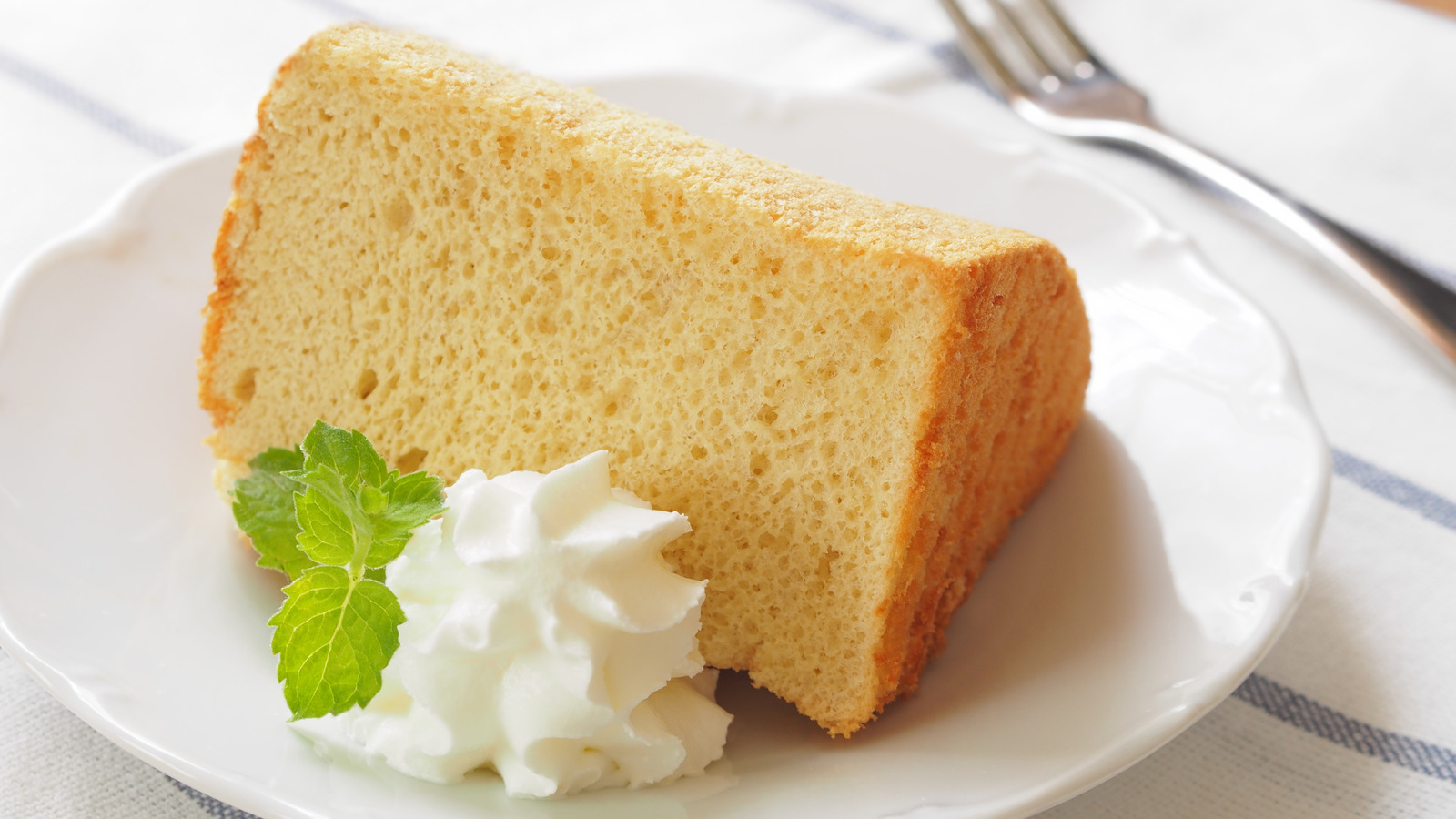
"Chiffon cake is more than a dessert. Thanks to its beautiful balance of rich taste and delicate texture, it's also an experience. Chiffon cake derives from sponge cake, but there is a difference between them. While it has that airy consistency, chiffon cake gets a buttery profile from vegetable oil. The star of the show really is that texture, all the more reason you really want to nail the cloud-like feel when baking chiffon cake."
""Whipping the whites on their own helps build all those tiny air pockets that make the cake rise and stay soft." Egg yolks have a lot of fat, and if that's mixing with the proteins of the egg whites, it will weigh them down instead of allowing them to form their net of bubbles that creates that airy texture. Without separating the eggs, you'll still get a good flavor, Lavallee notes, but adds that "you'll lose that delicate, fluffy crumb that makes chiffon cakes special.""
Chiffon cake blends sponge-like airiness with a buttery profile from vegetable oil, and its defining feature is a delicate, cloud-like texture. Achieving that texture requires separating egg whites and yolks so whipped whites can form stable air pockets that lift and soften the cake. Egg yolks contribute moisture and act as emulsifiers, but their fat interferes with egg white protein networks if mixed in too early. Not separating eggs preserves flavor but produces a denser, less fluffy crumb. Egg whites used alone also enable meringue and frothy cocktail textures due to their foam-forming proteins.
Read at Tasting Table
Unable to calculate read time
Collection
[
|
...
]